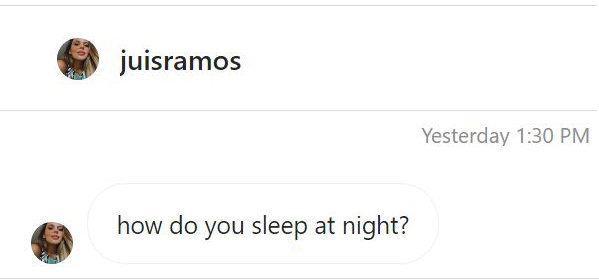
One of the unexpected gifts from my wrongful conviction is that I have become acutely aware of the cognitive biases that we are all susceptible to, and thus better able to avoid them in my own thinking.
/ a thread
/ a thread
One reason I still receive so much vitriol is THE ANCHORING BIAS: the tendency to rely on the first piece of information, regardless of its validity. The first thing most people heard about me was that I was a suspected killer. That colors everything else they ever hear about me.
The BASE RATE FALLACY is the tendency to ignore general information and focus only on the specifics of one case. Those who believe conspiracy theories about my guilt rarely look at general info regarding wrongful convictions. If they did, they’d see how common my case is.
It features all the hallmarks of wrongful convictions, many of which result from cognitive biases themselves. First and foremost, CONFIRMATION BIAS: the tendency to seek out information that confirms a hypothesis and ignore information that disconfirms it.
This manifests in wrongful convictions as police and prosecutorial TUNNEL VISION. The ANCHORING BIAS of their first hunch shapes their search for more information. They magnify the significance of any tiny thing that confirms the anchor, and write off large things that don’t.
Thus much weight was put on a kiss between me and Raffaele, while the fact that my DNA was not present in the room where the murder happened and that it was impossible to have participated in such a bloody event without leaving any traces of oneself, was intentionally ignored.
This is related to the SALIENCE BIAS: the tendency to ignore unremarkable items and focus on striking ones. The prosecution did this to me, and many people continue to succumb to this bias still.
Malcolm Gladwell makes this mistake in his analysis of my case. apple.co/3eSzKoy
Like the prosecution and tabloid media, he overlooked the copious moments of unremarkable behavior and highlighted the few moments of “odd” behavior, putting great explanatory weight on them and framing me as someone who acts guilty despite my innocence.
This is tied in with the FUNDAMENTAL ATTRIBUTION ERROR: the tendency to overemphasize personality-based explanations for others’ behavior, and de-emphasize the role of context.
Thus, in judging my behavior in those early days, people ignored the fact that I was alone, 3000 miles from home, my roommate had just been murdered, and the killer was on the loose. It was a scary and traumatizing experience, and people react in many ways to trauma.
Instead, people often strip my behavior from this context and conclude that I must be weird, off, or suspicious. SELECTION BIAS then shapes what gets reported. There are no news articles from 2007 about all the moments that I looked sad or scared or exhausted.
There are no deep dive articles about my perfectly benign upbringing, complete lack of a history of violence or mental illness, about my strong community and loving family.
But one small moment caught on camera of me seeking comfort from the young man I’d met five days previous, sharing a chaste kiss while confused and scared, gets endlessly republished, repeated, played on loop.
That SELECTION BIAS created an ANCHOR that CONFIRMATION BIAS could operate upon. This shaped the police’s behavior in the interrogation room.
After dozens of hours of telling them I didn’t know anything, and them telling me that was unacceptable, after being deprived of counsel and contact with my mom, after being slapped, after being questioned by people twice my age in a language I understood as well as a 10-year old
they convinced me that I had amnesia, that I had witnessed something so traumatic that I blocked it out. They would not accept the truth--that I knew nothing--so they forced me into the MISATTRIBUTION BIAS, mistaking imagination for memory:
They asked me to imagine what might have happened, they suggested scenarios, and then told me these were memories I must have blocked out. Exhausted and traumatized, I signed their statements, implicating myself and my boss.
I recanted hours later, which everyone ignored. My boss had a rock-solid alibi, but the police arrested him anyway. And I was blamed for that. And to this day, I am called a liar because of the statements the police pressured me into signing.
Again, the FUNDAMENTAL ATTRIBUTION ERROR is at play. The context surrounding those statements is ignored, and a personality-based explanation is given--she signed those statements because she’s an untrustworthy liar.
At trial, a host of other cognitive biases came into play. STEREOTYPING was used to paint me as an American “girl gone wild,” though I was in fact a nerdy poetry and language student.
The RHYME AS REASON EFFECT, in which something that rhymes is seen as more truthful, was used against me. This was used in OJ’s trial in reference to the bloody glove as “If it doesn’t fit, you must acquit.” For me, it was the moniker Foxy Knoxy.
That rhyme shaped opinion of me as sly, devious. In Italian, they translated it as volpe cattiva, the wicked fox.
The FRAMING EFFECT was used repeatedly at trial to present benign behaviors as suspicious. She ate pizza after her friend had been murdered? Why wasn’t she wasting away, sobbing?
Literally, the fact that I ate pizza was used against me as evidence that I was not sufficiently morose, as if a grieving and scared person can’t also be hungry.
Everything started with unfounded speculation, but as actual evidence came in which 100% implicated Rudy Guede as the sole perpetrator, the CONSERVATIVISM BIAS came into play, the tendency to insufficiently revise one’s beliefs in light of new evidence.
Thus the authorities refused to admit they’d been on the wrong track and instead twisted their theory in bizarre ways to somehow maintain that they’d been right all along in suspecting me despite all the evidence pointing to someone else.
So they arrived at the idea that I must have used my sex-magic mind-control powers to coerce Rudy Guede into doing the murder for me. And my motive was… I kid you not, they said this in court documents: "evil for evil’s sake."
After four years of prison and eight years of trial, I was definitively acquitted, but the CONTINUED INFLUENCE EFFECT came into play: the tendency to believe previously learned misinformation even after it has been corrected. My reputation has not been restored.
But why was I targeted and wrongfully convicted in the first place? I must have been suspicious somehow, right? The PROPORTIONALITY BIAS is our tendency to assume that big events have big causes, when often they are caused by many small things.
The massive decade-long series of trials with global media coverage doesn’t need an underlying conspiracy as a cause. It doesn’t require that I was grandly suspicious, nor does it require that the authorities were grandly corrupt.
The conjunction of many small cognitive biases by the authorities and media is enough to explain the massive debacle the case became, but the PROPORTIONALITY BIAS leads us to think there must be a bigger reason.
As far as my continued reputational damage, I can thank the ILLUSORY TRUTH EFFECT, the tendency to believe a statement is true if it’s easier to process or has been repeated many times. “Amanda Knox Bad” is a lot simpler than explaining the miscarriage of justice.
This is related to the AVAILABILITY CASCADE, in which a collective belief is seen as more plausible through repetition in public discourse. The hundreds (thousands?) of media articles painting me as a killer shape this perception that many people still have of me.
I try to counter that perception by acting honorably and putting thoughtful work into the world. However, the structures of social media and psychological factors create further SELECTION BIAS. If I tweet about criminal justice reform, I get maybe a dozen retweets…
If I make a joke about my wrongful imprisonment, the tweet spreads far and wide, and I pop onto others’ radar in that context. They don’t see the vast amount of serious work I do, and only see the highly retweeted joke, and conclude that I’m purely flippant.
And then they judge me for making light of a tragedy, but they fail to distinguish between the tragedy that befell Meredith and the one that befell me. This is the ZERO SUM BIAS, assuming incorrectly that if one person gains, another must lose in a situation.
In this case, they assume that respecting my victimhood by the Italian justice system is tantamount to disrespecting Meredith’s victimhood for being murdered by Rudy Guede. I’ve coined my own term for this: THE SINGLE VICTIM FALLACY.
You see it often in wrongful conviction cases. People wrongly assume that there can be only one true victim, and that if we are to honor the victim of the original crime, we must deny that anything wrong happened to the person WRONGFULLY convicted.
In truth, wrongful convictions multiply victimhood. Meredith is a victim of murder. I am a victim of a miscarriage of justice. Both our families are also victims of this miscarriage of justice, which has denied them closure and put our families through hell.
Because of this SINGLE VICTIM FALLACY, I am told I should never joke about the injustice I suffered, because it is wrongly conflated with the injustice done to Meredith by someone else. Because of this fallacy, I am told to shut up and disappear.
I take solace in the fact that I have such a great opportunity to see these cognitive errors up close, to see how poorly many people judge the situation, facts, and people in this complicated case that took over my life. To see how wrongly they judge me.
This makes me a better thinker. It helps me to better avoid all the cognitive biases that caused my wrongful conviction, that led to slanderous media coverage, and that are still responsible for the hate I receive daily.
Lastly, I should point out the BIAS BLIND SPOT, the tendency to see yourself as less biased than others. Knowing these biases exist doesn’t make me immune to them. Check yourself before you wreck yourself.
/fin
/fin
• • •
Missing some Tweet in this thread? You can try to
force a refresh












